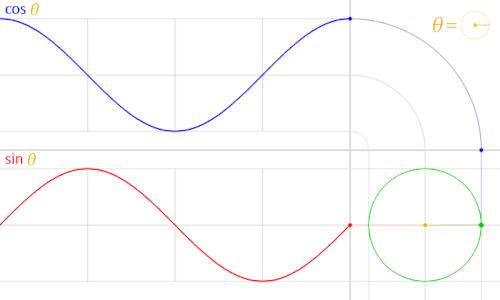Que no senos olvide
Que no senos olvide
Que no senos olvide

En sánscrito llamaron a la relación (cateto opuesto / hipotenusa) como jyā, cuerda de arco, debido a la similitud visual entre el arco de un círculo con su cuerda correspondiente y un arco con su cuerda.
Al árabe se transcribió como jība, sin significado en ese idioma y se escribe como jb (جب). Dado que el árabe se escribe sin vocales cortas, se lo interpretó erróneamente como jayb (جيب), que significa ‘seno’, ‘bolsillo’ o ‘pliegue’. En el siglo XII Gerardo de Cremona tradujo los textos de Al-Battani y Al-Juarismi al latín y utilizó el equivalente latino sinus “el pliegue colgante de una toga sobre el pecho”. Y por eso hoy hablamos de seno (y coseno).
Vota!
Fuentes
Katz, Victor J. "A History of Mathematics". Ed. Boston: Addison-Wesley, 2008 http://deti-bilingual.com/wp-content/uploads/2014/06/3rd-Edition-Victor-J.-Katz-A-History-of-Mathematics-Pearson-2008.pdf
The English word "sine" comes from a series of mistranslations of the Sanskrit jyā-ardha (chord-half). Āryabhaṭa frequently abbreviated this term to jyā or its synonym jīvá. When some of the Hindu works were later translated into Arabic, the word was simply transcribed phonetically into an otherwise meaningless Arabic word jiba. But since Arabic is written without vowels, later writers interpreted the consonants jb as jaib, which means bosom or breast. In the twelfth century, when an Arabic trigonometry work was translated into Latin, the translator used the equivalent Latin word sinus, which also meant bosom, and by extension, fold (as in a toga over a breast), or a bay or gulf.


